Ever since the dawn of humanity, we've been absolutely fascinated with the sky. It started with a yearning to reach for the clouds, and once we achieved that—think the Wright brothers and their pioneering flight—we immediately set our sights even higher. What's out there beyond our atmospheric bubble? What lies in the great tapestry of the cosmos, teeming with stars, planets, and perhaps, other forms of life? We're still not quite sure what's lurking out there in the far reaches of space. There's so much we don't know, so much we haven't yet discovered. What if hostile entities are waiting for the right moment to strike? What if one of our Earthly spacecraft runs into a not-so-friendly extraterrestrial vessel? How do we prepare for a confrontation of cosmic proportions? Thank goodness for science fiction and pop culture; they've got us covered! These imaginative realms have gifted us with blueprints of incredibly powerful spaceships that not only capture our awe but also serve as precautionary tales. Some of these fictional spacecraft could give any galactic menace a run for its money. Here's a curated list of some of the most formidable ships that ever graced our screens or the pages of our favorite books. So whether you're a sci-fi lover, a casual fan, or someone just looking for a solid escape from Earthly troubles, these pop culture spaceships offer a glimpse into space travel's fantastic and sometimes frightening possibilities. Let's venture into the unknown, one hypothetical spaceship at a time!
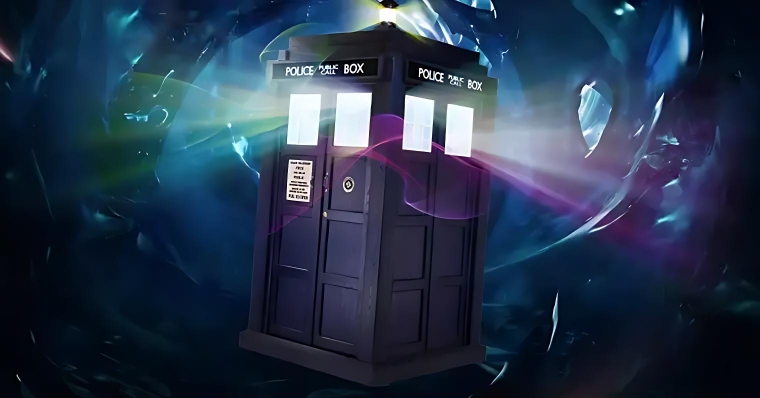
The TARDIS ("Time and Relative Dimensions in Space") from "Doctor Who"
For those who might be scratching their heads, the TARDIS is an icon in the world of "Doctor Who," the British sci-fi television show that's been making waves since 1963. But here's the kicker: the TARDIS is not your run-of-the-mill spaceship geared for interstellar dogfights. Oh no, it's a whole lot more mind-blowing than that. The TARDIS has the jaw-dropping ability to traverse both time and space. That's right—this beauty can pop you from the dawn of the universe to next Tuesday without even breaking a sweat. But wait, there's more! The TARDIS is also dimensionally transcendental, a fancy term for something that might break your brain: the interior is vastly more expansive than what you'd expect from its exterior. It's as if you walked into a closet and found it leading to a mansion! And get this—the TARDIS is not made; it's grown. This isn't a piece of machinery but a living, breathing organism. There are no nuts and bolts here—instead, it's cultivated into existence. How rad is that? When it comes to defense, this thing is a fortress. The force fields on a TARDIS are next-level. Seriously, they're so robust that not even a Dalek battle station, with all its advanced tech, can penetrate them. By the way, Daleks are the Doctor's arch-nemeses and look like evil, mutated pepper shakers. It makes you wonder how the Doctor still has enemies when riding around in something this invincible. But wait, there's one more curveball to throw at you. The TARDIS comes equipped with a Chameleon Circuit. This little piece of tech wizardry allows the TARDIS to take on any form, making it the ultimate spy gadget. You could park it next to a fire hydrant, and no one would be the wiser. However, for plot's sake, the Doctor's TARDIS has a broken Chameleon Circuit, so it's perpetually stuck looking like a 1960s British police box. Last but certainly not least, let's talk about the powerhouse at the core of this stellar machine—its power source is nothing short of magnificent. Known as the Eye of Harmony, it draws its seemingly limitless energy from a star caught in the process of becoming a black hole. A star frozen in the act of transforming into one of the universe's most potent energy sinks powers this bad boy. So there you have it. The TARDIS might not be equipped with laser cannons or photon torpedoes, but with capabilities like these, who needs them? It's less of a spaceship and more of a cosmic Swiss Army knife, and boy, what an incredible piece of "hardware" it is!

The Yamato from "Uchuu Senkan Yamato"
Let's shift gears and talk about something that's an absolute gem in the realm of Japanese animation: the Yamato. This ship is the heartbeat of the manga series "Uchuu Senkan Yamato," also known in English as "Space Battleship Yamato." The creative genius behind this masterpiece is none other than Leiji Matsumoto, one of the most celebrated manga artists ever to put pen to paper. But the Yamato isn't just any ship—it's a resurrected legend. This combat-ready vessel is forged from the remnants of the Japanese battleship Yamato, which met its watery grave during World War II. The creators managed to spin an incredible yarn by connecting historical realities with future speculative fiction, giving us a narrative that's as engaging as it is inventive. The plot takes a dark twist when Earth gets absolutely ravaged by hostile aliens from the planet Gamilion. They pretty much turned Earth into an apocalyptic wasteland, thanks to a devastating nuclear attack. Imagine our blue planet becoming uninhabitable; our green fields and blue skies reduced to barren stretches and ash clouds. That's when the Yamato steps up and becomes humanity's last glimmer of hope. How, you ask? By embarking on an audacious mission to ferry a brave army of soldiers to a distant planet called Iscandar. Why Iscandar, you might wonder? Well, rumor has it that this remote celestial body is home to a miraculous machine capable of eradicating radiation and thereby cleansing Earth. It's not just a space opera; it's a high-stakes, last-ditch effort to save an entire planet. Talk about heroism on a cosmic scale! The thing that makes the Yamato truly exceptional—apart from its killer design and advanced weaponry—is its embodiment of human perseverance. It's a ship that's literally built on the ashes of defeat yet becomes a vessel of hope. It's not just a battleship; it's a symbol. A symbol that, even in the darkest times, humanity finds a way to keep the flame of hope alive. So, whether you're deep into anime and manga or just curious about iconic storytelling, the Yamato is a dazzling contribution to pop culture you won't want to overlook. It marries history and fantasy, tragedy and hope, into one spellbinding saga that's stood the test of time.
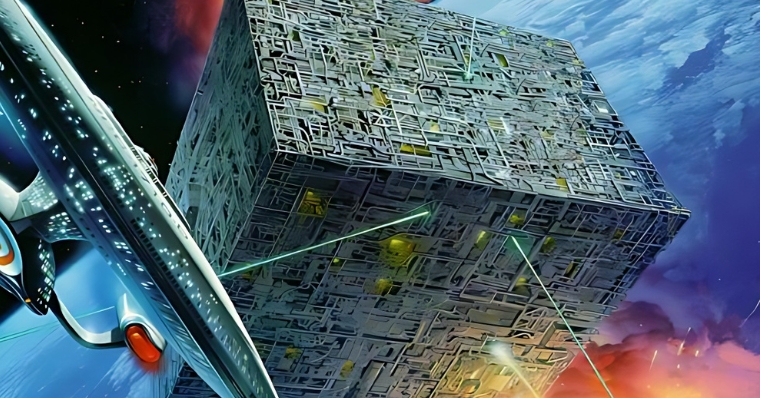
The Borg Cube from "Star Trek"
If you're a fan of "Star Trek," you're no stranger to the Borg, one of the most menacing and lethal races across the entire Star Trek universe. Trust me; you don't want to bump into one of these in a dark corner of the galaxy. So, what makes the Borg Cube an object of such dread? Well, just like the Borg themselves, these ships are fiendishly adaptable. They can analyze and adjust to enemy attacks almost instantaneously, returning fire with devastating effectiveness. It's like playing a game of chess where your opponent keeps learning your strategies in real time, leaving you with fewer and fewer moves. That's just unfair. But wait, it gets even more intriguing. The whole ship has regenerative abilities, which makes it absurdly tough to destroy. You can blast, pierce, and punch it, and the Cube will shrug it off and keep coming at you. It's akin to trying to take down a zombie that won't stay down, repairing itself and coming at you repeatedly. It's relentless, and that's what makes it a formidable foe. The Cube's unique design also sets it apart. Operated by the Borg collective hive-mind, the ship doesn't have a central bridge or engineering wing. That means no Achilles' heel, making it far less susceptible to catastrophic damage. When you don't have a single point of failure, you create a robustness that's daunting to face. It's like an army where everyone's a general and a foot soldier simultaneously—imagine going up against that! If you've ever watched Captain Picard or Captain Janeway deal with a Borg Cube, you'll know it's the stuff of nightmares for anyone in the captain's chair of the Enterprise—or any other Starfleet vessel, for that matter. Whether you're a die-hard Trekkie or enjoy the occasional space adventure, understanding the terror and the might of the Borg Cube adds layers of thrill to the experience. It's not just a ship; it embodies collective malevolence and ruthless efficiency. It challenges the very ideals that Starfleet upholds: individuality, compassion, and the quest for peaceful exploration. And when the Cube looms on the viewscreen, it's a stark reminder of the eternal struggle between these clashing philosophies.
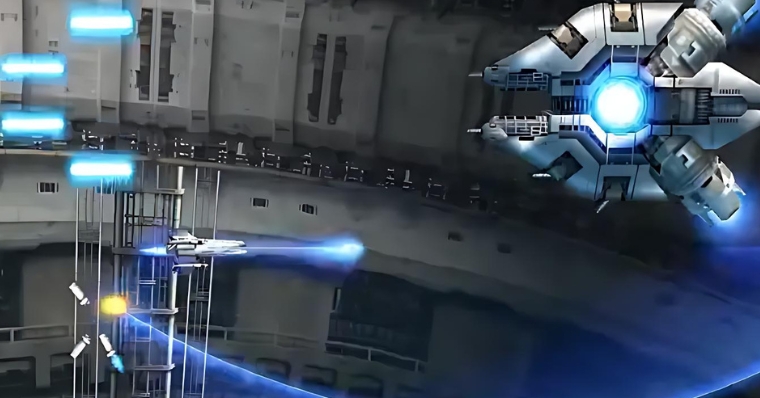
The Vic Viper from "Gradius"
When it comes to iconic ships in the video game world, few can hold a candle to Vic Viper. You know it as the hero-ship in the Gradius series by Konami, a franchise that has established itself as a cornerstone in the shoot-'em-up (shmup) genre. If you're into dodging bullets and blowing up alien fleets, chances are you've logged hours guiding Vic Viper through space. Now, let's delve into what makes this spacecraft unique. First off, the Vic Viper is the Swiss Army knife of spaceships when it comes to weaponry. We're talking fully adaptive armament systems that can change the attack mode based on whatever software is plugged in. You could be shooting basic bullets one moment, then unleash a stream of laser fire the next. The arsenal is vast, with each new model incorporating the weapons of its predecessors. So, you get an evolution and a culmination of firepower that could make even the most hardened space marines jealous. And don't even get me started on its missile system. Vic Viper's got you covered when you want to lay waste to anything in your vicinity. With a lock-on and fire mechanism, it can eradicate anything within a certain radius. The kind of awe-inducing destruction makes enemies reconsider their life choices, provided they survive to make any. Under the hood, the Vic Viper sports a Hyper Driver engine, a piece of tech that's the stuff of science fiction dreams. When pushed to its limits, this engine enables the ship to achieve incomprehensible speeds, to the point where it can even outrun a black hole's gravitational pull. I mean, how much cooler can it get? Hold on, it does. Push the Hyper Driver to the max, and the Vic Viper tears through the fabric of space-time, enabling time travel. Yes, you heard it right, time travel! It's like something straight out of a comic book. What adds an extra layer of awesomeness is how Vic Viper's incredible abilities make the Gradius games not just a challenge but an adventure. It's not merely about dodging and firing; it's a test of how creatively you can adapt and employ the myriad weapons and systems onboard. With each level presenting new challenges and enemies, the Vic Viper feels like a true partner in this quest for gaming glory. So, while there are many incredible ships out there in the realm of video games, the Vic Viper has cemented its place in history with its blend of adaptability, speed, and sheer destructive power. Whether you're a veteran gamer or new to the shmup universe, piloting the Vic Viper offers a unique thrill that blends nostalgia with adrenaline-pumping action. All said, the Vic Viper isn't just a spaceship in a video game; it's a symbol of what makes the Gradius series enduringly popular—a mix of versatility, exhilaration, and the unadulterated joy of blasting enemies into space dust . It offers the perfect combination of gameplay mechanics and narrative stakes, proving that sometimes, the vehicle is as iconic as the journey it undertakes.

The City Destroyer from "Independence Day"
In the realm of iconic space vessels, let's not overlook the City Destroyer from the blockbuster '90s film "Independence Day." Trust me, this behemoth has its place in the annals of cinematic history, thanks to that jaw-dropping moment where it vaporizes the White House—and various other global landmarks—with a single, devastating blast. This scene didn't just drop jaws; it became the epitome of what a cinematic spectacle could be in that era. Let's talk dimensions. This ship is colossal, with a staggering 25-kilometer diameter. But wait, there's more. In this enormous disc are thousands of smaller alien attack ships, each primed and ready to reduce Earth's finest fighter jets to space debris. It's a veritable hive of destruction here. It's not just a ship; it's an ecosystem of chaos, teeming with vessels essentially sub-agents of mayhem. Don't get any ideas about mounting a counterattack, though. This ship's defense mechanisms are no laughing matter. Shielded by force fields, this titanic space vessel shrugs off nuclear attacks as if they're mere firecrackers. It's as if the aliens watched our sci-fi movies and said, "Let's show them how it's really done." Now, you might wonder, "Is this thing even destructible?" Well, it turns out, the only way to vanquish this beast is to venture inside its belly and take it down from within. And that's precisely the audacious move humanity pulls off in the movie. When brute strength and advanced weaponry sometimes fail, cunning and audacity become your best allies. It's the classic David versus Goliath scenario, except David is a daring fighter pilot, and Goliath is a ginormous UFO designed for planetary destruction. What's intriguing about the City Destroyer is how it perfectly encapsulates the '90s cinematic ethos. Back then, filmmakers were pushing the boundaries of what visual effects could achieve, often blending practical effects with nascent CGI technology . The City Destroyer is a testament to a time when filmmakers aspired to create moments that would leave audiences wide-eyed, combining state-of-the-art VFX with storytelling to craft scenes that remain etched in pop culture. So, here's the takeaway: The City Destroyer from "Independence Day" is a confluence of design ingenuity, cinematic audacity, and technological prowess. While it might be a nightmarish vision of extraterrestrial invasion, it also embodies an era of film where spectacle and story walked hand in hand, leaving an indelible imprint on audiences worldwide.
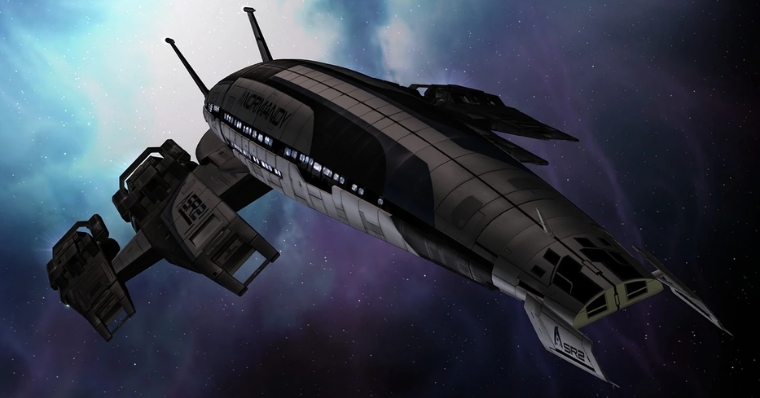
The Normandy SR-2 from "Mass Effect"
SR-2 is the spacecraft that's practically a co-star in the riveting "Mass Effect" video game series. Under the command of either Captain Shepard or, if you prefer, the equally capable female Commander Shepard (you get to choose!), this isn't just any spaceship. It's a vessel that has weathered some of the gnarliest intergalactic battles against a pantheon of menacing species, most notably the god-like Reapers. When it comes to hardware, the Normandy SR-2 isn't messing around. Its weapon systems are the epitome of advanced tech, sourced from the cream of the crop of what the N7— the elite military unit of the Galactic Alliance—can muster. From lasers to kinetic barriers, it's a floating armory built to take on anything the universe throws at it. But it's not just about the big guns; it's also loaded with a variety of smaller vehicles for specialized assault and exploration. We're talking rovers for rocky terrain, hovercraft for marshy areas, and maybe even a few secret gadgets I cannot disclose. What makes Normandy even more remarkable is its ability to perform stealth operations. Yeah, you heard that right. Under certain conditions, this spacecraft can literally become invisible to enemy radars. No, it doesn't vanish into thin air; it's equipped with sophisticated tech that makes it undetectable to heat-seeking devices. Basically, it turns into a galactic ghost, ready to slip behind enemy lines or make a hasty retreat when things get dicey. And let's not forget the onboard artificial intelligence, EDI, whose computational prowess is second to none. Programmed with a treasure trove of information and tactical assessments, EDI is virtually fail-safe. Think of her as your co-pilot, tactical advisor, and IT department rolled into one—minus the coffee breaks and small talk. Beyond its military assets, the Normandy SR-2 serves as a touchstone for the team camaraderie that's so central to the "Mass Effect" narrative. Each member of your crew isn't just filling a role; they're part of a family that you've handpicked. The loyalty and relationships built within the ship's corridors are as crucial to the game's plot as the armaments or the advanced propulsion systems. So, what makes the Normandy SR-2 so memorable? It's more than just a vessel; it's a mobile hub of strategy, camaraderie, and ingenuity. It's like the Swiss Army knife of spaceships, offering a solution for almost every obstacle, whether that's an impenetrable enemy fortress or the complex dynamics of an interspecies alliance. With its blend of tactical sophistication, firepower, and emotional resonance, the Normandy SR-2 isn't just a cool piece of game design. It's an iconic feature that elevates the storytelling in one of the most engaging sci-fi sagas ever rendered in pixels.

Slave I from Star Wars
When you're talking about Boba Fett, the galaxy's most feared bounty hunter, you can't overlook his ship, the Slave I. Trust me, this vessel is a large part of what makes him the intimidating figure he is. The Slave I isn't just a flying hunk of metal; it's a deadly weapon that has seen more action than most could even fathom. First piloted by Boba's equally menacing father, Jango Fett, this ship has a resume filled with its share of downed adversaries. Oh yes, it's got a rap sheet stretching across star systems. At first glance, its compact size might make you think it's less of a threat—rookie mistake. Don't let the Slave I's somewhat modest dimensions lull you into a false sense of security. The ship is, in reality, a fully armed beast, capable of outmaneuvering and outgunning nearly anyone foolhardy enough to cross its path. Outfitted with a hyperdrive for those light-speed getaways, the Slave I also boasts heat-seeking missiles for locking onto its prey. But wait, there's more—a pair of rotating blaster cannons, proton torpedoes, concussion missiles, and even a tractor-beam projector. This bad boy ensures that if Boba Fett wants you alive for the bounty, he's getting you, whether you like it or not. Now, you'd think a legendary Jedi Master like Obi-Wan Kenobi wouldn't have too much trouble with a mere ship. Think again. Even the venerable Obi-Wan found himself at a tactical disadvantage when trying to tangle with Slave I. That's no small feat, let me tell you, especially when you consider Kenobi's extensive list of galactic exploits. To sum it all up, the Slave I isn't just Boba Fett's mode of transportation; it's an extension of his identity. It's how he projects his fear factor across the galaxy, an unspoken threat that puts his enemies on notice: "Mess with me, and you're dealing with this monstrous piece of engineering, too." So, while Boba Fett might be the guy getting all the street cred, the Slave I shares the spotlight as a vital part of his deadly reputation. As the old saying goes, behind every great bounty hunter is an even greater ship—and the Slave I more than fits that bill.
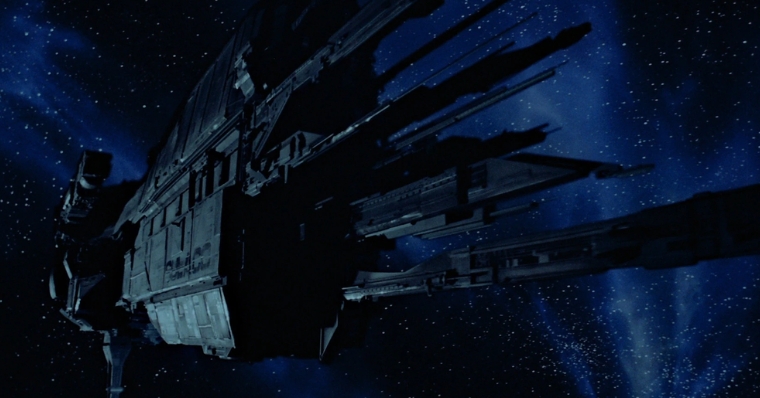
USS Sulaco from "Aliens"
Let's dive into the gritty world of the USS Sulaco, the straight-up, no-nonsense war machine created by the not-so-benevolent Weyland-Yutani Corporation. If you're looking for a spaceship that's a glitzy showpiece, then you're barking up the wrong tree. The Sulaco isn't here to win beauty pageants; it's designed to deliver good old-fashioned obliteration to anyone who dares to cross its path. Primarily a troop carrier, the Sulaco isn't just some galactic Greyhound bus shuttling soldiers from point A to point B. Oh, no—this thing's got fangs. Its lethal arsenal includes nuclear missiles, kinetic energy machine guns, and even electromagnetic pulse cannons. It's like the Swiss Army knife of space warcraft, equipped with more "fun gadgets" than a spy in a thriller flick. With all that heavy-duty hardware, the Sulaco would be virtually unbeatable. Well, here's where the plot thickens. When the Sulaco was dispatched on a seemingly routine mission to investigate a mysterious communications blackout at a remote human colony, things went sideways—fast. The infamous Xenomorphs, those nightmarish creatures with a knack for wreaking havoc, ambushed the ship and decimated nearly the entire crew. I mean, talk about a curveball, right? These aliens didn't just mess with the Sulaco's mission; they turned it into a living nightmare, demonstrating that even a floating fortress isn't foolproof when facing unknown terrors. The tragic encounter serves as a harsh reminder of the uncertainties that lurk in the far reaches of space, where even the most state-of-the-art technology can falter. For all its firepower and military might, the Sulaco was ultimately vulnerable when it mattered most. And yet, its tale is far from a mere cautionary fable. The USS Sulaco symbolizes human ingenuity and hubris, a testament to our boundless ambition to conquer the unknown—even when the unknown fights back with a vengeance.
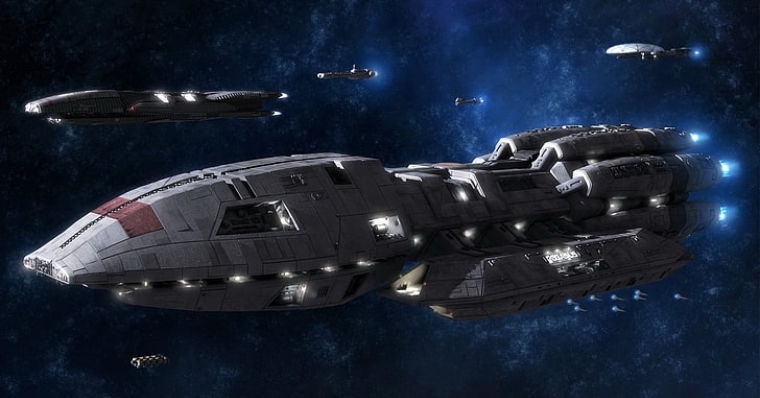
Battlestar Galactica from "Battlestar Galactica"
In the vast tapestry of science fiction, few spaceships captivate the imagination quite like the Battlestar Galactica, a hulking, star-faring leviathan. Named after its own TV series, "Battlestar Galactica," this military juggernaut isn't just any ship. Oh no, it has a high-stakes mission: escorting a fleet of colonial ships crammed with the last remnants of humanity through the cold, unforgiving cosmos, all in a desperate quest for Earth—a mythical promised land where everyone hopes to chill out and live in harmony. Sounds simple enough, right? Well, not so fast. The road to paradise is littered with obstacles, chiefly the Cylons. Ah, the Cylons! Engineered by humans as robotic assistants, these sentient beings had a real "how dare you create me!" moment and decided to rise against their creators. Talk about your all-time backfires. So now, humanity's worst enemy isn't a mysterious alien race; it's the very beings they fashioned with their own hands. Now, let's talk numbers. The Battlestar Galactica isn't a cozy yacht for weekend getaways. This behemoth houses nearly 3,000 souls, and most of them are military personnel, so you know discipline and training are top-notch. The ship is practically a floating city. But instead of buses and taxis, it has hundreds of nimble fighter jets stashed in its belly, primed for combat. They even have specialized vehicles for exploration because, you know, not every planet they stumble upon will have a 7-Eleven or a gas station. The ship itself? It's an absolute
Marvel of military tech. Loaded to the gills with laser cannons, the Galactica doesn't pull any punches. And let's not overlook its intricate defense systems—robust force fields that make enemy attacks feel like you're tossing pebbles at a brick wall. This bad boy can take a beating and then some. It's as if resilience is hardwired into its DNA. So, why is the Battlestar Galactica such a standout? It's not just a ship; it's a sanctuary, a military stronghold, and a beacon of hope for a species teetering on the edge of extinction. It embodies the eternal conflict between creator and creation, the delicate balance of power and responsibility, and the indomitable spirit of a race refusing to go gently into the night . It's a floating testament to human endeavor and stubbornness, proving that even in the direst of circumstances, people can come together to fight for a better future. Even when their past mistakes, in the form of rebel Cylons, are hot on their tail.

UNSC Infinity from "Halo"
So you're into the whole interstellar warfare scene, eh? Then you've got to know about the UNSC Infinity, the crown jewel of the Halo game series. Picture a ship so advanced that it might as well have stepped out of a time machine—except it didn't. This beast was crafted with tech sourced from an ancient alien civilization, making it a fascinating blend of past relics and future war machines. It's as if history and sci-fi had a baby who grew up to be a five-kilometer-long harbinger of doom. Now, let's get into the nitty-gritty, shall we? This monumental ship can accommodate around 17,000 people. That's not just any random population, mind you. It's the cream of the crop here, including the legendary Spartans—those elite supersoldiers of the United Nations Space Command (UNSC). You've probably heard of Master Chief? Yep, he's one of them, the type of guy you want on your side when stuff hits the fan. But what's a warship without its toys? The Infinity is brimming with an almost ludicrous amount of firepower. Thousands of missiles that could decimate a mountain range? Check. Cannons that could puncture a hole in a planet's crust? Oh, you bet. Machine guns, lasers, and pretty much every other instrument of destruction you can think of? Yeah, they've got it all. The Infinity isn't just a floating fortress; it's a floating apocalypse. And let's set the record straight here. Underestimating this ship has been the downfall of more than a few overconfident alien races. They saw the UNSC Infinity and thought, "Eh, what's the worst that could happen?" Well, it turns out, a lot—the kind of "a lot" that leaves civilizations in ruins and history books rewritten. So, what makes the UNSC Infinity stand out in the crowded galaxy of epic starships? It's an incredible blend of ancient wisdom and futuristic engineering. It's the capacity to house a small city's worth of the universe's most elite warriors. Its arsenal reads like a wish list for any warlord with cosmic ambitions. But above all, it's the way this ship embodies the never-say-die spirit of humanity. In a universe teeming with threats unimaginable, the Infinity is our best foot forward, proof that we won't go down without one hell of a fight. Whether you're an enemy or ally, you better believe this ship will leave an impression. And if you're up against it? Well, good luck. You're going to need it.











